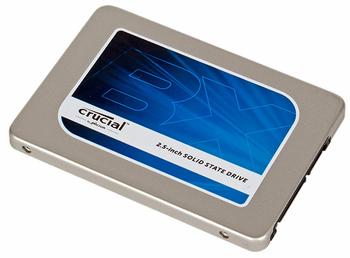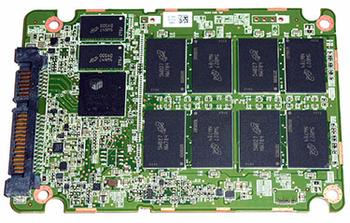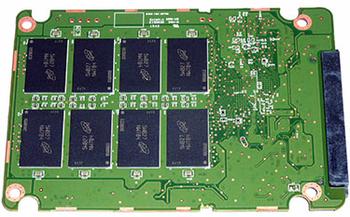Introduction
The solid-state drive (SSD) market is now a hard place to play. An ever-decreasing cost of NAND chips and fierce competition between players has resulted in 240GB drives available for under £50. Going bigger, up to 1TB, costs less than £200. Ouch.
But not all drives are created equal, though to the uninformed it may appear this way. For example, almost every modern SSD is able to saturate the real-world SATA 6Gbps limit of approximately 550MB/s on both reads and writes.
A better indication is to look at the performance when examining the total operations per second, but the real acid test occurs when the SSD is in a well-used state - most consumers don't reinstall the operating system every week, leaving the drive's behind-the-scenes magic to keep performance at high levels.
Hoping to hit all of these good notes is Crucial, whose current consumer catalogue consists of the performance MX200 and more value-focussed BX200, released in November of last year. BX200 is only available in a 2.5in form factor and in 240GB, 480GB and 960GB capacities.
Crucial BX200 SSDs |
||||
|---|---|---|---|---|
| Nominal Capacity | 256GB |
512GB |
1,024GB |
|
| Controller | Silicon Motion SM2256 |
|||
| NAND | 16nm Micron TLC |
|||
| Total Available Capacity | 240GB |
480GB |
960GB |
|
| Interface | SATA 6Gb/s, compatible with SATA 3Gb/s and 1.5Gb/s |
|||
| Sequential Read Speed | 540MB/s |
|||
| Sequential Write Speed | 490MB/s |
|||
| Random IOPs (4KB Reads) | 66K |
|||
| Random IOPs (4KB Writes) | 78K |
|||
| Available Form Factors | 2.5in, 7mm-high |
|||
| Endurance | 72TBW |
|||
| Life Expectancy | 1.5 Million Hours MTBF |
|||
| Warranty | 3 Years |
|||
| Current Retail Price | £60 |
£120 |
£250 |
|
A 2.5in-only form factor isn't damaging because Crucial's faster MX200 is available with mSATA and two types of M.2 connectors in capacities up to 500GB. There's six per cent or so over-provisioning on each BX200 model, ostensibly to help garbage collection along, so, as an example, the Windows user-accessible area on the largest drive is 894GB.
Sequential read and write speeds, quoted as out-of-the-box figures, are healthy for the three capacities. Crucial achieves this by improving upon this drive's predecessor, BX100, by now including SLC write acceleration, where a small portion of the NAND is converted into one-bit-per-cell SLC mode for faster accesses.
Keeping costs in check is general triple-level-cell (TLC) memory that enables Crucial - or, rather, parent company Micron - to add 128Gbit dies that are denser and therefore cheaper to produce than regular MLC memory. And while the longevity of TLC memory is now reasonable enough to be justified on entry-level consumer SSDs, the 72TBW figure, which equates to 40GB writes per day for five years, is 4.5x lower than the MX200 1TB.
The NAND interfaces with a Silicon Motion controller backed by Micron's own low-power DDR3 memory. This SM controller offers a four-channel interface and is compliant with 128-bit AES encryption and the Trusted Computing Group Opal v2.0 standard, but Crucial does not apply either on the BX200. Nor is the drive compatible with Microsoft eDrive.
It's interesting that the random IOPS speeds are higher for writes than reads, but neither figure is at the top-end of what is currently available. The MX200, for example, is able to sustain 100K read and 87K write IOPS. This is most likely due to Crucial using TLC memory. The BX200 is also compatible with the Crucial Storage Executive tool and this model features thermal monitoring, too.
The 960GB version of the BX200 continues the usual, distinctive Crucial branding that has been fairly consistent in design for the past three years. The 7mm-high chassis doesn't have the usual screws on the bottom holding it together. Rather, the more modern method is to have the top section effectively clip into the bottom. Removing the casing tends to leave telltale marks that, you would assume, are easy enough to identify for warranty purposes. Speaking of which, the drive is covered by a standard 3-year warranty.
Stripping away the casing reveals the actual SSD, which, as you will know, includes a controller, supporting DRAM, and the NAND chips themselves. 16 chips each carrying 64GB of nominal capacity are spaced evenly across both sides, and given that this is a TLC-based drive, Crucial is sensible in adding a healthy amount of over-provisioning support on each BX200.





